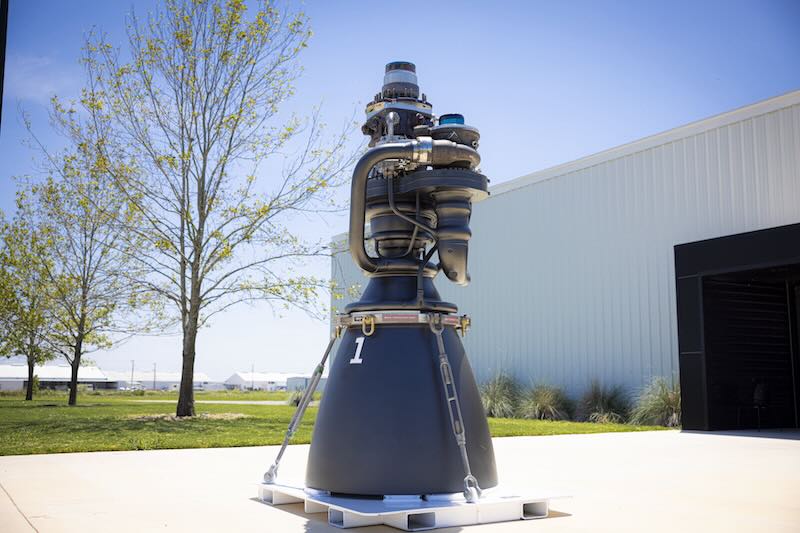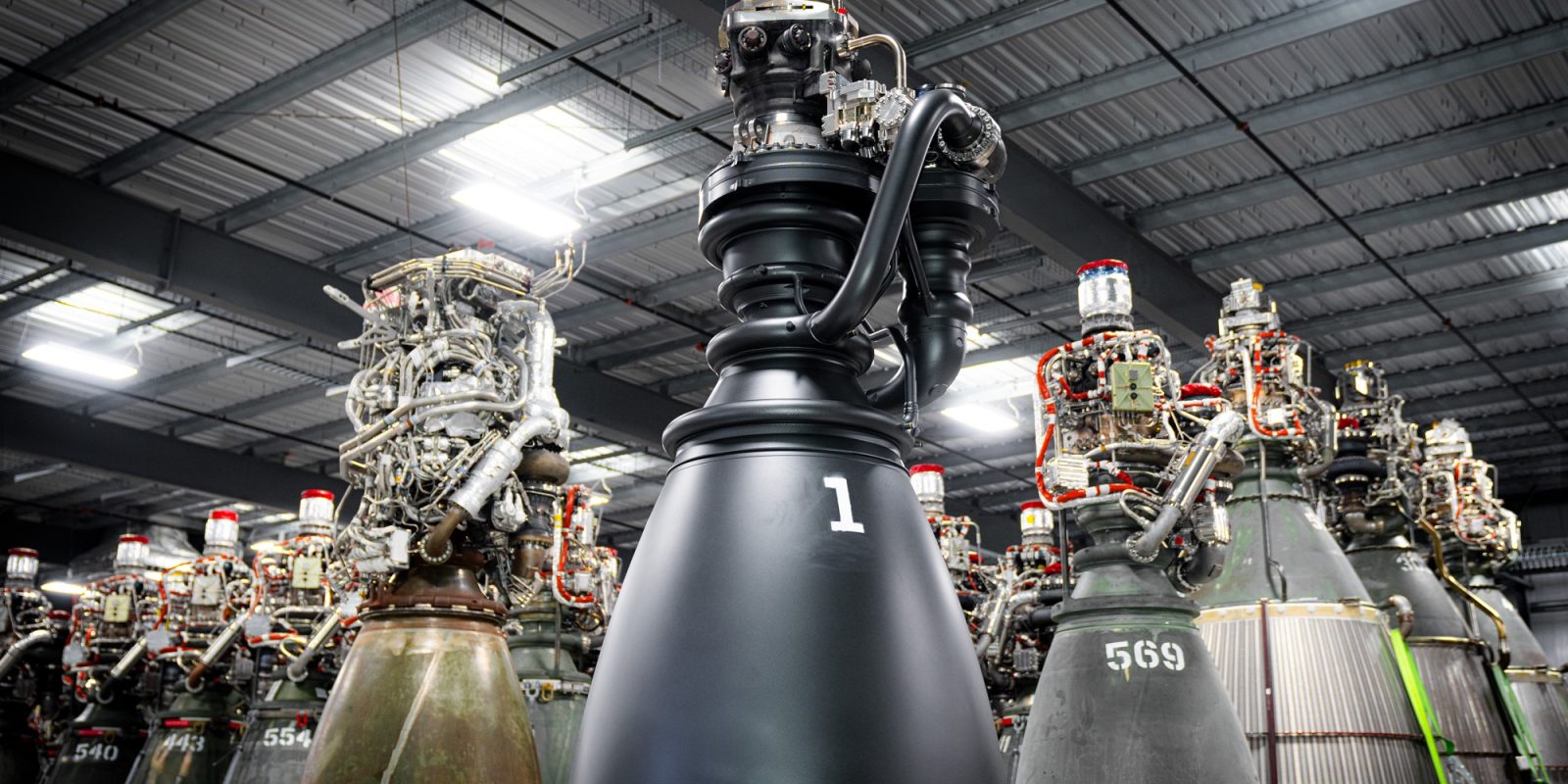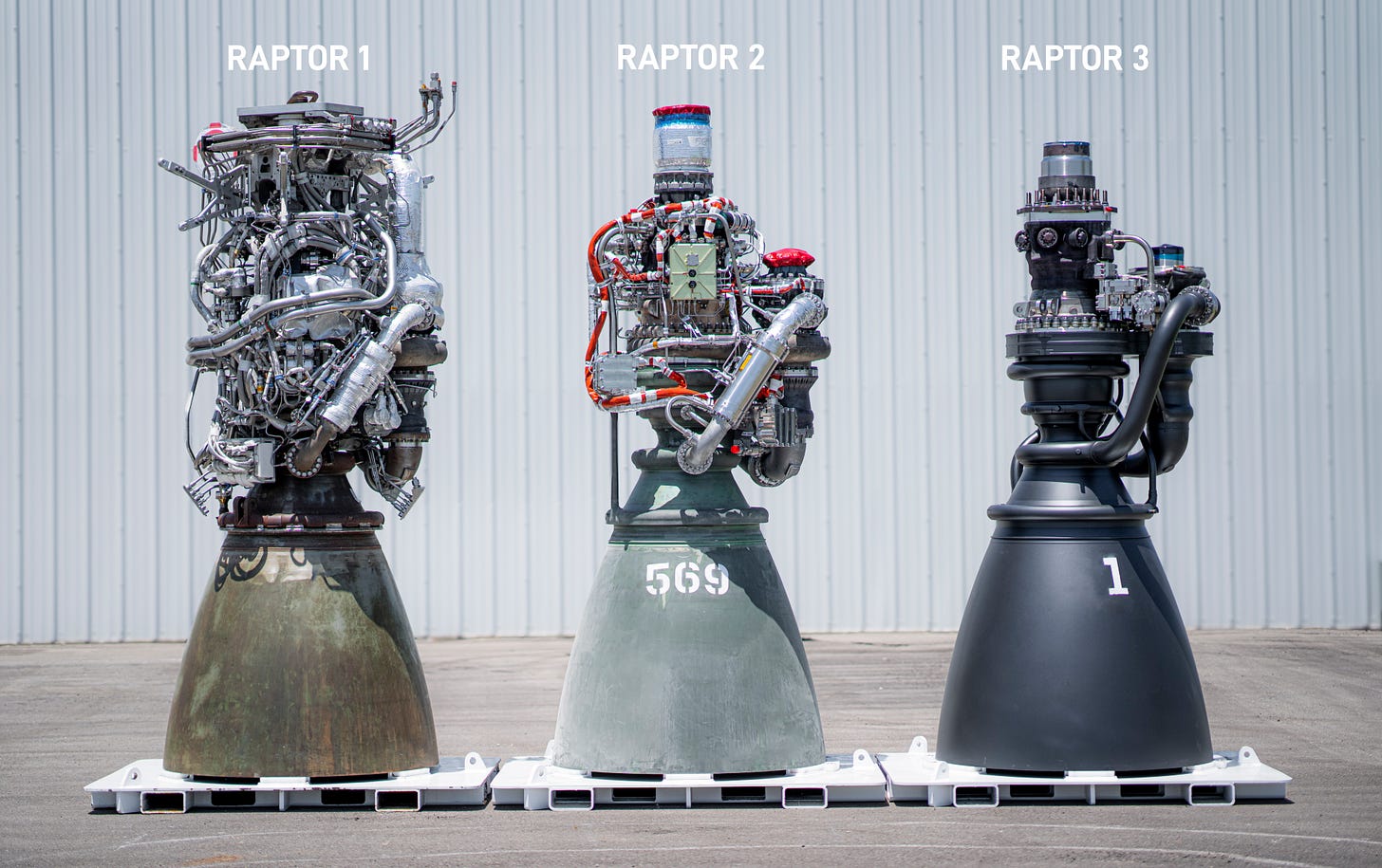Overview of the SpaceX Raptor 3 Engine Improvements

The SpaceX Raptor 3 engine signifies a major advancement in rocket engine technology, showcasing multiple enhancements over its predecessors. These improvements focus on increasing thrust, efficiency, and manufacturability while simplifying the design. This report synthesizes key insights into the main enhancements of the Raptor 3 engine.
Increased Thrust and Specific Impulse
One of the most significant improvements in the Raptor 3 is its increased thrust capability. The engine produces a whopping 280 tons-force (tf) at sea level, representing a 51% increase from Raptor 1 and a 21% increase from Raptor 2[3][1]. Further iterations of the engine may potentially exceed 300 tf, suggesting ongoing enhancements in power output[3][1]. The specific impulse of Raptor 3 has also been improved to 350 seconds, marking a focus on efficiency which allows for greater payloads and improved mission capabilities[3][1].
Weight Reduction and Structural Simplification

The Raptor 3 engine reflects a concerted effort to reduce weight, coming in at 36% lighter than Raptor 1 and 7% lighter than Raptor 2, with a total weight of 1,525 kg[3][1]. This weight reduction is largely attributed to a streamlined design that eliminates unnecessary components, resulting in fewer parts and simplified manufacturing processes[11][10]. The elimination of the heat shield is particularly notable, as the Raptor 3 engine utilizes regenerative cooling instead, which enhances not only its structural integrity but also its efficiency[6][2].
Enhanced Cooling Mechanisms
The integration of advanced cooling technologies in Raptor 3 is another critical improvement. The engine boasts integrated cooling channel walls, allowing for more effective thermal management[4][1]. This development leads to a streamlined appearance and maintains high efficiency even at higher operational loads. The regenerative cooling system replaces the need for a traditional heat shield, further simplifying engineering requirements and reducing overall mass[5][10].
Design Innovations

SpaceX has emphasized a design philosophy that incorporates simplicity in Raptor 3, a shift from the complexity seen in earlier versions[4][2]. The integration of components, such as secondary plumbing into the main pump, contributes to a lighter engine while improving reliability[4][1]. This includes a reduction in bolted joints, which enhances structural integrity and simplifies servicing[7][1]. Musk himself described Raptor 3 as having a 'simpler-looking' design compared to previous models, reflecting a trend towards minimizing complexity without sacrificing performance[6].
Manufacturing Efficiency

The improvements in the Raptor 3’s design facilitate enhanced manufacturability. SpaceX aims to streamline production processes and cut down on costs associated with manufacturing[11][10]. The adoption of advanced manufacturing techniques such as 3D printing is likely being employed to tackle the challenges posed by intricate cooling channels and components[4].
The foundational approach of 'no part is the best part' suggests a significant reduction in assembly requirements, indicating that fewer parts lead to faster production and potentially lower costs[10]. This commitment to manufacturing efficiency aligns with SpaceX’s broader goal of increasing flight frequency for its Starship system.
Future Prospects

Elon Musk has indicated that while Raptor 3 is an impressive achievement, there is still substantial potential for future improvements, including an additional 8-10% increase in thrust through subsequent iterations[3][1]. This visionary outlook underscores SpaceX’s dedication to pushing the boundaries of rocket propulsion technology.
Conclusion
In conclusion, the SpaceX Raptor 3 engine embodies a significant leap forward in rocket technology through a combination of increased thrust, weight reduction, advanced cooling mechanisms, innovative design, and enhanced manufacturing efficiencies. These improvements not only set new standards for the performance of rocket engines but also align with SpaceX’s objectives for rapid reusability and cost effectiveness in launching missions to space. The Raptor 3 engine demonstrates how thoughtful engineering and design philosophy can lead to groundbreaking advancements in aerospace technology.
Get more accurate answers with Super Pandi, upload files, personalized discovery feed, save searches and contribute to the PandiPedia.
Let's look at alternatives:
- Modify the query.
- Start a new thread.
- Remove sources (if manually added).